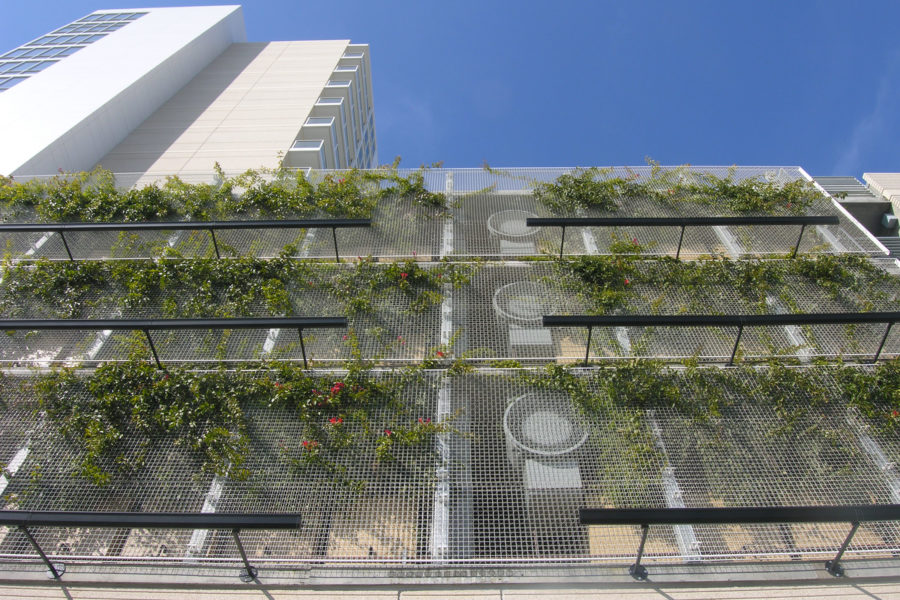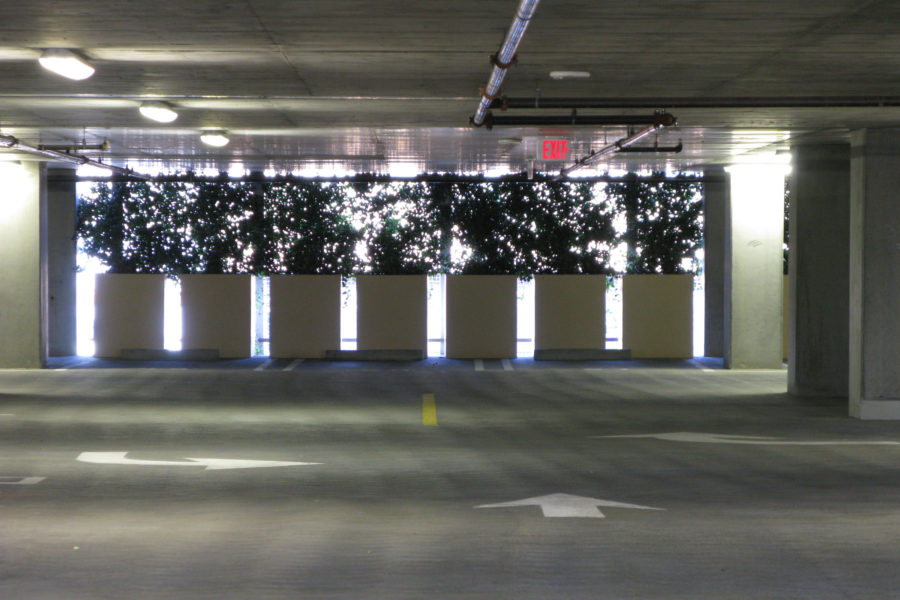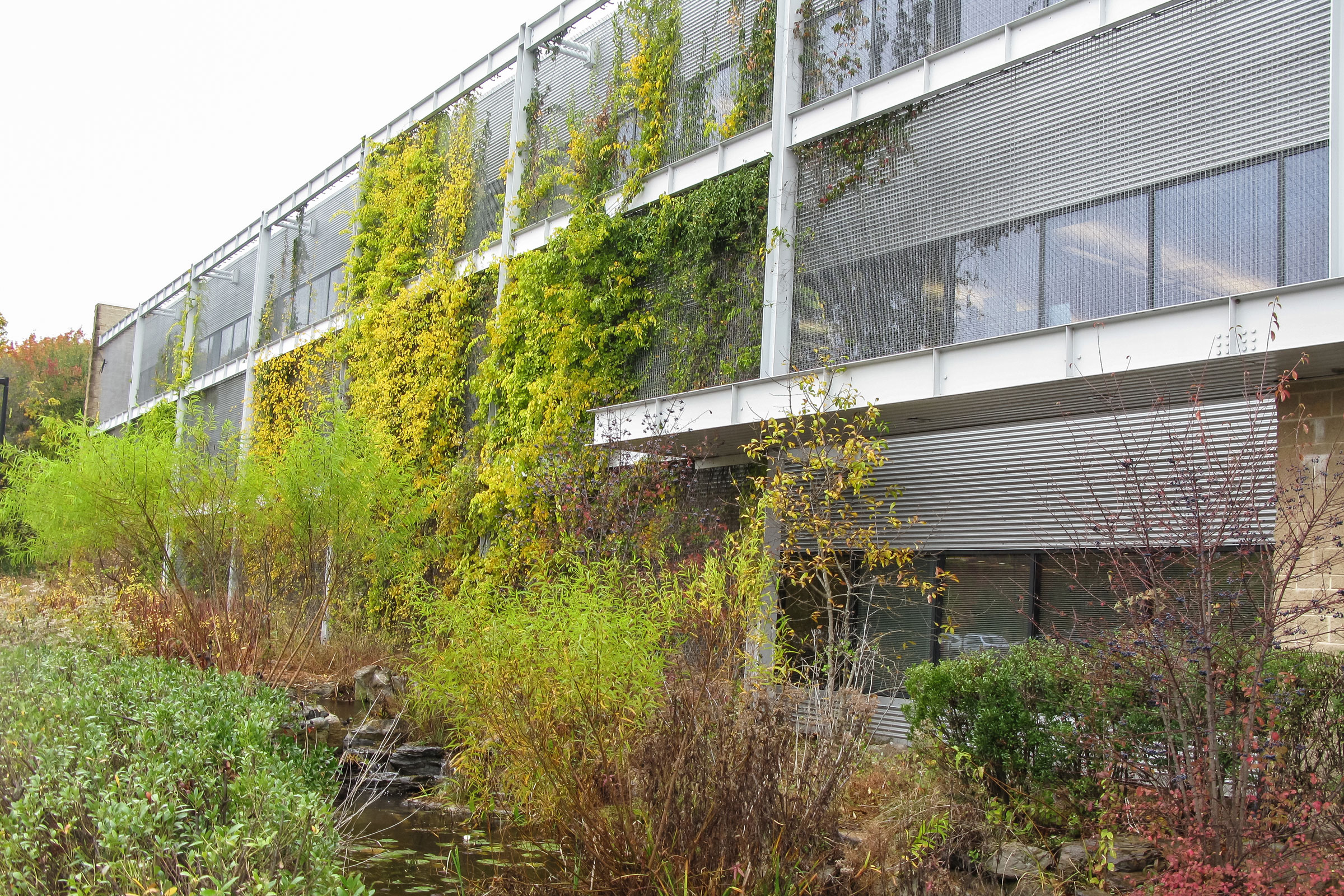Story at a glance:
- An expert in the field asks: Is biophilic design just another buzzword?
- Biophilia was coined by a psychologist and philosopher who said we’re hardwired to thrive in nature.
- Biophilic design can include natural lighting, ventilation, and landscaping and can be used on many different scales.
Biophilic design is often mentioned in marketing campaigns for all kinds of products. It truly is a modern buzzword. But what does the phrase “biophilic design” really mean, how is it defined, and does it also mean environmentally friendly? Or are those two entirely different topics?
The General Idea of Biophilic Design
Biophilia means “love of life.”
Biophilia as an expression was coined by psychologist and philosopher Erich Fromm, who, in summary, said humans are genetically hardwired to like and thrive in nature. This genetic hypothesis has been a source of biological debate for many years, but a recent genetic study published in 2021 seems to support the statement. Yes, humans feel better in nature compared to unnatural, sensory devoid surroundings.
In 1984 biologist Edward O. Wilson first coined the “biophilia hypothesis,” or “the innate tendency to focus on life and lifelike processes.” Biophilic design can be seen as an extension of the hypothesis of biophilia, and it is an architectural approach that aims to increase the building occupants’ connection to nature. This can, for example, mean natural lighting, ventilation, and landscaping. Biophilic design can be used on many different scales, ranging from the building to the city.
Many historical architectural trends have strong biophilic elements, most notably the Art Nouveau movement. However, it is critical to note that “biophilic design is not a style; it is an ethic,” as Aldo Leopold, the father of wildlife ecology, once said. Though the word is relatively new, biophilic design has been common throughout history with many mentioning the Hanging Gardens of Babylon as one of the earliest examples.
Biophilic Design and the Sensory Deprived Modern World
In our eagerness to build our societies, we missed out on one crucial aspect—and that is our human need to connect with nature. Instead of integrating city and nature, human life has been isolated from our natural surroundings; just look at most inner cityscapes, office buildings, schools, and shopping centers. Nature has become a mere source of materials and a recreational place.
This disconnect with nature might, for some, seem like a “tree hugger issue,” and I genuinely wish it were. Unfortunately, there is a lot of data showing many adverse effects of sensory-deprived non-natural environments on human health and wellbeing. And if that language does not pique your interest: We lose money. People’s productivity is affected, and people get sick and miss work. We will go deeper into the financial aspects of this further down. This is where biophilic design enters the stage and offers a menu of possible solutions.
What Biophilic Design Is and Isn’t
It is important to be clear on what biophilic design is and what it is not.
Biophilic design does not mean brief isolated exposures to nature but repeated sustained engagement. A space filled with disconnected design elements is also a poor example of biophilic design. Instead, the design elements should be connected, but also to the space in which they are situated, a bit like an ecosystem that generates an emotional attachment.
Biophilic design should also enable ease of interaction within the space to foster connections and community and give us a meaningful context.
3 Basic Elements & 25 Associated Attributes
Stephen Kellert, one of the pioneers of biophilic architectural design, has created a framework of principles that supports a multisensory environment; an interaction between humans and nature in the built environment in such a way that our human needs will be satisfied.
Biophilic design has three basic elements and 25 associated attributes:
Direct interaction with nature. For example, direct interaction with a vegetated landscape, natural light, etc.
Indirect experience of nature. Indirect interaction with nature, through artistic representation, etc.
Experiences in the space. How do the elements connect to the space, and how do we interact with the space?
If you want to read more about the biophilic design elements and their attributes, I highly recommend the Terrapin report: 14 Patterns of Biophilic Design: Improving Health & Well-Being in the Built Environment.
Is Biophilic Design Always Eco-friendly?

Outside the parking structure of the Ellington Hotel in Oakland, California. Photo courtesy of greenscreen
“Is biophilic design always eco-friendly?” I will answer that with a decisive no, but if done well, it absolutely can be.
I have yet not discovered any requirements for eco-friendliness in biophilic design, which made me somewhat disappointed. I have also never seen any statements regarding net carbon sequestration. This is corroborated by eco city pioneer Paul Downton’s article on the topic. Downton makes another good point: The eco-city is, per definition, a biophilic city, but biophilic design is not intrinsically eco-friendly.
I think this is important to discuss, as the state of current biophilic design is wide open for all kinds of greenwashing interpretations.
The ROI of Biophilic Design

Inside the parking structure looking out of the Ellington Hotel in Oakland, California. Photo courtesy of greenscreen
There is a clear business case for well-designed biophilic projects. What is lacking is often clear communication around the return on investments, or ROI, in my personal experience.
Often biophilic designs and green infrastructure projects are marketed and sold as projects for do-gooders with a big wallet. Though these early adapters are critical, the industry must push to show the positive economic effects of biophilic design strategies and interventions through clear business cases. By emphasizing the ROI, we also open a door for more social equality as it is more likely that green infrastructure solutions are found in higher socioeconomic areas compared with low-income ones.
Integrating nature into the built environment is a sound investment in productivity and health. A wealth of data exists to show exposure to nature can make hospital patients heal faster compared with patients who were not exposed to any views of nature. The reduction of time spent in the hospital was around 8%, which translates into significant savings for the patient and the health care system, considering a daily cost of more than $10,000 per patient.
Another study showed that 10% of employee absence could be attributed to a failure of the architectural design to provide the employees with the five most vital requirements for basic functioning, established by the American Association for Psychology:
1. A need for change (varying temperature, air, light, etc.)
2. An ability to act on the environment and see the effects
3. Exposure to meaningful stimuli (stagnant atmospheres cause an onset of chronic stress)
4. To have one’s place that provides safety, identity, and protection
5. A view of the outside world
Green walls—like cost-effective and low maintenance trellis systems from greenscreen—are great ways to help solve this issue.
Another ROI aspect is that people are willing to spend more money on properties near natural elements. In one example from Cleveland, houses with attractive landscaping and at least one tree added 7% to the average rental rates. Well-designed landscaping on its own brought in 4 to 5% extra, and even a partial view of a lake brought in 30% more in rent.
Every project is different, but it is possible to find good financial arguments for biophilic solutions, provided they are not greenwashing “solutions.” One often just needs to look a bit further ahead than a year or two, and sometimes one has to take a step back to see the forest and not just the trees.
Are Plastic Plants Biophilic Design?
I have seen a lot of plastic plants marketed as biophilic design, which has made me scratch my head. Sure, based on the second principle of biophilic design, nature-likeness is a form of biophilic design, but only if incorporated into a larger system. An isolated plastic green wall is, in my opinion, never an example of biophilic design.
However, there is one exception—and that is biophilic design in certain hospital rooms, where no real plants are allowed to stand and there is no natural light, like in MRI rooms. There, even plastic plants might be better than no plants. I am personally terrified of that loud, big tube, and having something calming there absolutely helps. But is this really what we should aim for in the rest of our built environment?
This type of biophilic design has some positive effects in limited environments, but it fails in so many others. Plastic plants and/or art alone do not contribute to our ecosystem services. On the contrary, these illusions consume resources, have a poor carbon budget, and no matter what we do, a plastic plant will never be more than a plastic plant. Also, I have yet to see any research that investigates how long the natural illusion remains. Personally, after realizing something is fake, it breaks the illusion for me, and I wonder if the positive psychological effect remains.
Biophilic Design and Building Standards
It might seem that biophilic design is vague, non-specific, and thus prone to suffer from greenwashing campaigns. Still, there are building standards that support biophilic design and aim to create a more solid framework with not only qualitative but also quantitative metrics as a definition of biophilic design. Two examples of such standards are the Living Building Challenge and the WELL Building Standard.
The Living Building Challenge is an international standard that has included biophilic design as an essential element in the section related to health and well-being. It asks: How is nature incorporated into the internal building (light, natural shapes, forms, and so on)? The standard also demands an ability to connect with nature as the inhabitants interact with the building’s interior and exterior.
The WELL Building Standard has a more quantitative approach than the Living Building Challenge, which might act as a protection against greenwashing. Apart from quite similar qualitative demands as for the Living Building Challenge, the quantitative part includes points like 25% of the project must have accessible grounds or green roofs. Of this 25%, 70% must have vegetation (including canopies). Furthermore, at least 1% of the roof areas must be covered with potted plants, and the project must provide at least one plant wall per floor. This vegetated wall must cover a wall area equal to or greater than 2% of the floor area or cover the largest of the available walls, whichever is larger. Finally, there also must be regularly placed water features using ultraviolet sanitation or equivalent technology to ensure water safety.
Biophilic design is an incredible topic and the way forward. Still, I firmly believe more standardization must be applied for it to remain meaningful and not end up as a mere greenwashing buzzword.


